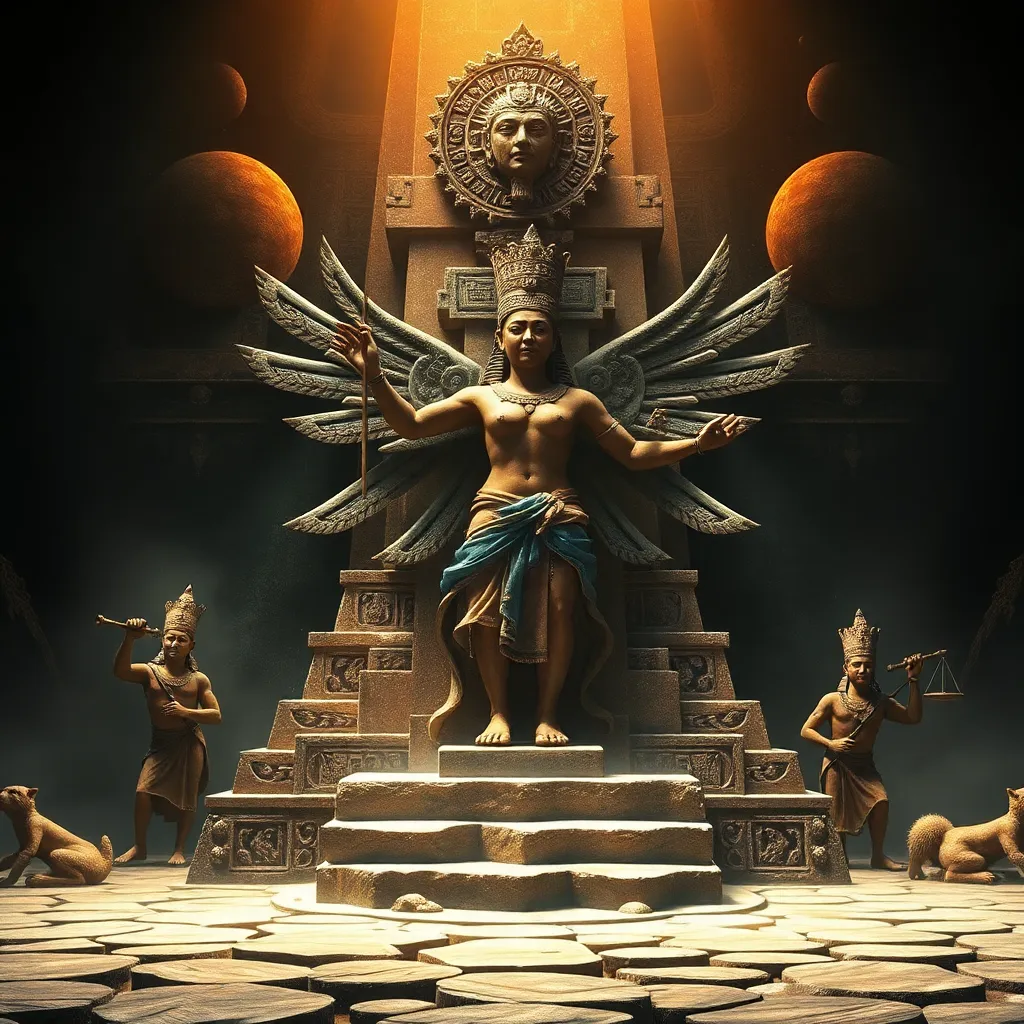The Slaying of Echidna: Exploring the Mythological Accounts of the Serpent-Woman’s Defeat
I. Introduction
Echidna, often referred to as the “Mother of Monsters,” is a prominent figure in Greek mythology. Her character plays a crucial role in the narratives surrounding primordial chaos and the emergence of heroic figures. The purpose of this article is to explore the various accounts of her defeat, delving into the intricacies of her character, the heroes who confronted her, and the lasting impact of her legend.
II. The Origins of Echidna: The Mother of Monsters
Echidna is typically described as a half-woman, half-serpent creature, born from the primordial deities, Gaia (Earth) and Tartarus (the Abyss). Her lineage is significant, as she is often depicted as the mother of many fearsome creatures, including the Chimera, the Nemean Lion, and the Sphinx.
As the progenitor of these monsters, Echidna represents the chaos of the natural world and the untamed aspects of life. In ancient Greece, her character was culturally significant, embodying the dangers that heroes must face and the challenges of civilization in overcoming primal forces.
III. The Heroes of Myth: Who Faced Echidna?
A variety of heroes confronted Echidna throughout mythology, each representing different facets of courage and strength. Key figures include:
- Heracles: Perhaps the most famous of the heroes, Heracles faced various challenges associated with Echidna’s offspring as part of his Twelve Labors.
- Zeus: The king of the gods often intervened in battles against chaos, including those instigated by Echidna and her children.
- Perseus: Known for his bravery, Perseus also encountered creatures born from Echidna’s lineage during his quests.
The motivations for these heroes varied, often rooted in personal glory, the defense of their people, or the fulfillment of divine tasks. The stakes involved were high, as each confrontation with Echidna and her offspring represented a struggle between civilization and chaos.
IV. The Accounts of the Slaying: Variations in the Myth
Mythological sources provide different narratives regarding the slaying of Echidna. Two of the most notable accounts come from:
- Hesiod’s “Theogony”: In this text, Echidna is described in detail, emphasizing her monstrous nature and her role as the mother of various beasts. However, the account does not focus heavily on her defeat.
- Apollodorus’ “Library”: This work provides a more narrative-driven account of Echidna’s offspring and the heroes who faced them, often detailing the specific battles and outcomes.
Regional variations also exist, with some cultures emphasizing the chaotic aspects of her nature more than others, reflecting local values and fears. The interpretations of her character and the myth of her defeat highlight the complexity of her role in Greek mythology.
V. Symbolism and Themes in Echidna’s Defeat
Echidna serves as a powerful symbol of chaos and destruction within the mythological framework. Her defeat embodies several themes, including:
- Heroism: The heroes who confront Echidna often undergo trials that test their strength and character, representing the hero’s journey.
- Sacrifice: Many heroes must make sacrifices, often risking their lives or facing great personal loss to overcome Echidna and her offspring.
- Order vs. Disorder: The conflict between Echidna and the heroes symbolizes the broader struggle between civilization and the chaotic forces of nature.
The implications of her defeat extend beyond the individual heroes; it represents a cosmic balance where order triumphs over disorder, allowing civilization to flourish.
VI. Cultural Impact: Echidna in Art and Literature
Echidna has been represented in various forms of ancient art and literature, showcasing her significance in Greek culture. Notable representations include:
- Pottery: Many ancient Greek vases depict scenes featuring Echidna and her monstrous offspring, often illustrating the heroic battles fought against them.
- Literary Works: The myth of Echidna has influenced countless literary adaptations throughout history, inspiring poets, playwrights, and modern authors.
In contemporary times, Echidna continues to be a subject of fascination, appearing in modern retellings that explore themes of femininity and monstrosity, demonstrating her lasting legacy.
VII. The Legacy of Echidna: From Monster to Myth
Over time, the image of Echidna has transformed from a mere monster to a complex mythological figure. Her story raises questions about femininity, power, and the nature of monstrosity. Today, she is often analyzed in discussions of:
- Feminism: Echidna’s character can be seen as a critique of societal views on women, representing the fear of female power and independence.
- Monstrosity: The interpretation of her character challenges the binary notions of good versus evil, inviting a deeper understanding of what it means to be a monster.
The enduring fascination with Echidna reflects humanity’s ongoing exploration of these themes in popular culture, literature, and art.
VIII. Conclusion
The myth of Echidna remains significant in understanding the complexities of heroism, chaos, and the human condition. Her story not only illustrates the perennial struggle between order and disorder but also invites reflections on the nature of fear and the role of myth in society. Preserving these narratives allows us to explore the depths of human experience and the archetypes that shape our understanding of the world.



